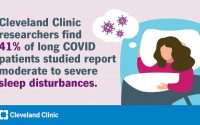Acute Gastroenteritis in US Causes Widespread Disease
Acute gastroenteritis (AGE) is common in the United States, with an average of about one case per person each year, a new epidemiologic study suggests.
The study also estimates that nearly 1 in 10 cases may be spread by people who shed pathogenic viruses even if they’re not symptomatic.
“AGE continues to exert a substantial burden of disease within the population, as well as upon healthcare delivery systems,” Mark A. Schmidt, PhD, MPH, an infectious disease epidemiologist at the Kaiser Permanente Center for Health Research in Portland, Oregon, and colleagues write in Emerging Infectious Diseases.
Elusive Epidemiology
AGE causes an estimated 179 million illnesses each year in the US, but data on its epidemiology are limited because cases tend to be mild and don’t usually require medical care. Patients who visit their providers may not be tested for a pathogen, and even if they are, the pathogen may not be reported to public health surveillance systems, the authors write.
To help characterize AGE’s impact in the US, the researchers conducted the Community Acute Gastroenteritis (CAGE) Study of patients of all ages in a 561,470-member managed-care organization in Oregon and Washington between September 2016 and September 2017.
They randomly selected 25,050 patients to answer survey questions only and another 3167 patients to answer survey questions and provide stool samples. From these, they received 3894 completed surveys and 570 usable stool samples.
The researchers weighted all analyses to account for age-stratified probability sampling. After weighting, respondents shared similarities with the organization’s overall membership and underlying geographic population base: 40.1 years average age, 52% female, and 81% White.
The study’s primary AGE case definition included vomiting (one or more episodes within 24 hours) or acute diarrhea (three or more loose stools within 24 hours) within the past 30 days. To analyze incidence and healthcare utilization, the authors separately analyzed the reports of acute diarrhea. In both analyses, they excluded individuals with less than three loose stools in a 24-hour period, those reporting vomiting only, and those with medical conditions associated with chronic diarrhea.
The researchers tested stool samples for norovirus, rotavirus, astrovirus, and sapovirus from 70 participants who met, and from 500 who did not meet, their primary definition for AGE. They used real-time quantitative reverse transcription PCR (qRT-PCR) and forwarded samples that tested positive for rotavirus to the Centers for Disease Control and Prevention for confirmatory qRT-PCR testing and enzyme immunoassay.
Widespread Illness
Prevalence was similar in males and females. No seasonal patterns were detected. The authors also found that:
-
The 30-day AGE prevalence was 10.4% (95% CI, 9.3 – 11.6), a rate of 1.27 cases per person per year; of these, 23% reported both diarrhea and vomiting, 50% reported only diarrhea, and 27% reported only vomiting.
-
The 30-day diarrhea-only prevalence was 7.6% (95% CI, 6.7 – 8.7), a rate of 0.92 cases per person per year.
-
AGE prevalence with diarrhea or vomiting was highest at ages 0-4 years at 13.5% (95% CI, 10.6 – 16.9), and ages 18-44 at 12.5% (95% CI, 10.3 – 15.0). Prevalence was lowest among those over 65, at 6.4% (95% CI, 4.9 – 8.3).
-
In the acute diarrhea analysis, the highest prevalence occurred among those 18-44 years of age, at 10.2% (95% CI, 8.2 – 12.6), and 45-65, at 8% (95% CI, 6.5 – 9.7). Prevalence was the lowest among those over 65, at 4.7% (95% CI, 3.4. – 6.3).
-
22.4% of the 70 stool specimens from patients reporting AGE tested positive for at least one viral pathogen vs 8.2% of the 500 specimens from patients without AGE, with norovirus and or rotavirus being most common.
-
80 patients with AGE had at least one AGE-related visit with a provider within the organization: 26 in-person only visits; 37 in-person and remote (phone, video, email); and 17 remote only.
Reducing Transmission
The authors advise hand hygiene and other precautions, including vaccination, to reduce AGE spread.
Heidi Gullett, MD, MPH, associate director of the Center for Community Health Integration at Case Western Reserve University School of Medicine in Cleveland, Ohio, agrees.

Dr Heidi Gullett
“This study helps elucidate the epidemiology of a common condition, helps us understand that asymptomatic shedders may also contribute to chains of transmission, and underscores the importance of mitigating community transmission,” she told Medscape Medical News by email.
“AGE is critically important, causing hospitalizations with morbidity across the lifespan, reducing productivity, and having substantial economic impacts,” added Gullett, who was not involved in the study.
“Acute gastroenteritis is very commonly seen in primary care; however, primary care clinicians often treat symptomatically and do not usually know the exact pathogen causing the illness,” she said.
The abundance of virtual primary care visits during the COVID-19 pandemic made it even less likely for providers to collect specimens and identify culprit pathogens, she added.
“While most pathogens are only treated symptomatically, rotavirus is a vaccine-preventable disease. For young children, the rotavirus vaccine is safe and effective at preventing severe disease,” Gullett advised. “This study helps us see the prevalence of rotavirus as a cause of AGE and reiterates the importance of rotavirus vaccinations for young children.”
Proper hand hygiene involves a thorough wash with soap and water, which is more effective than hand sanitizer against certain kinds of germs, including norovirus, according to the US Centers for Disease Control and Prevention.
The study was supported by grants from Takeda Vaccines, Inc., and by institutional grant funding to Schmidt and several co-authors. The full list is available with the original article. The remaining co-authors and Gullett report no relevant financial involvements.
Emerg Infect Dis. Published online October 12, 2022. Full text
For more news, follow Medscape on Facebook, Twitter, Instagram, YouTube, and LinkedIn
Source: Read Full Article


